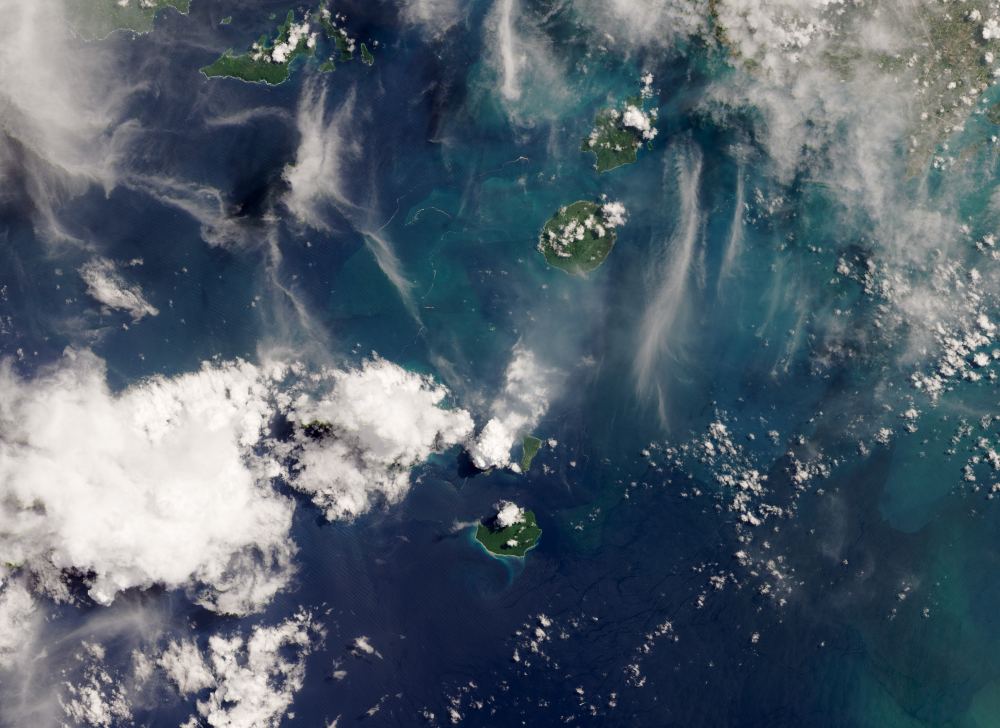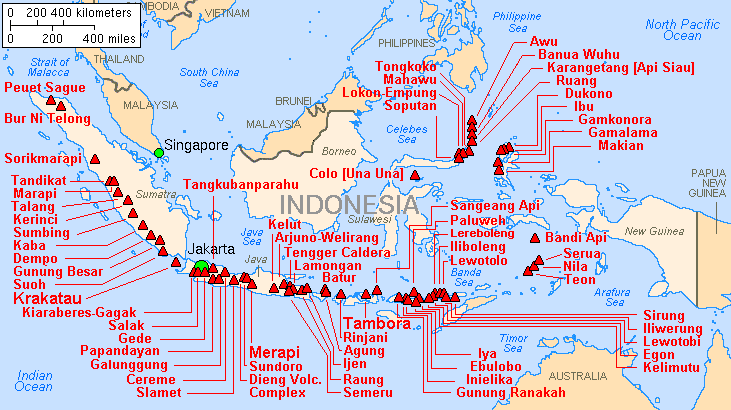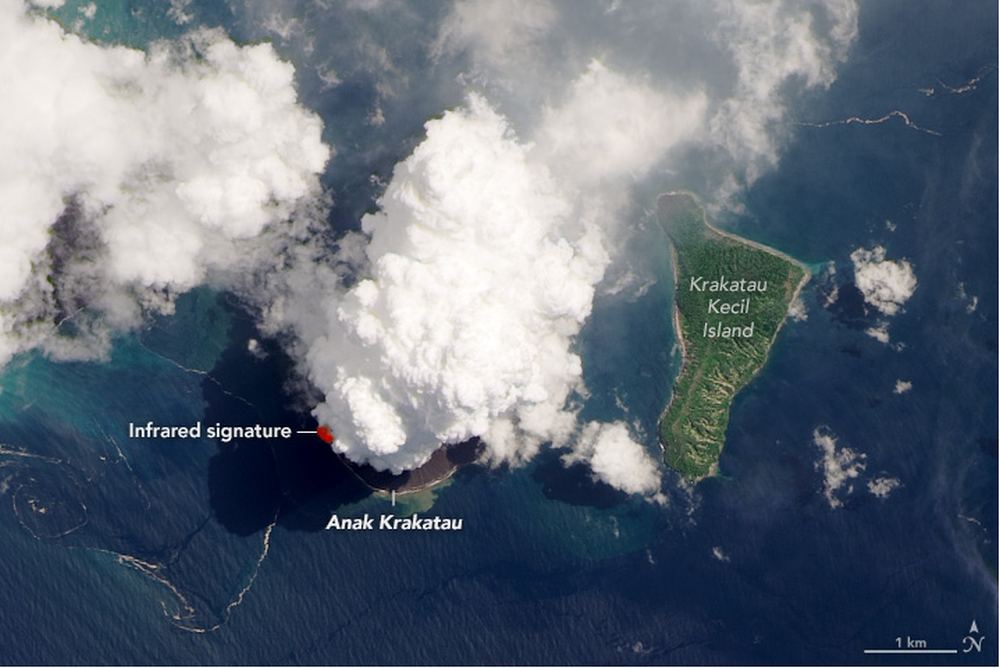In between the Indonesian islands of Java and Sumatra lies the Sunda Strait. And in the Sunda Strait lies the much smaller island of Anak Krakatau, one of Earth’s active volcanoes. It’s erupted more than 50 times in the past 2,000 years, and now it’s doing it again.
The volcano has been erupting off and on during 2020. In fact, Anak Krakatau has experienced frequent eruptions since 2008. Recently, LandSat 8 captured some images with its Operational Land Imager (OLI.)

The OLI captured these true-color images of the plume of steam towering over the island. The white color of the plume suggests that it’s mostly steam and gas. If it contained much ash, it would appear darker. Infrared data is overlaid on top of the larger image, showing what might be molten rock.
According to Verity Flower, a volcanologist at NASA’s Goddard Space Flight Center, there’s volcanic activity at work. “The location of the plume suggests that it is volcanic in origin,” Flower said in a press release. Flower and colleagues also used another satellite to check on the volcano.
They used NASA’s Terra satellite and its Multi-angle Imaging Spectroradiometer (MISR) to study the plume more closely. With that instrument they were able to measure the height of the plumes. They were also able to measure the shape, size, and light-absorbing properties of the particles within the plumes. Those measurements confirmed that the plume was mostly steam and gas. Those smaller particles are reflective and make the plume appear white.
There may still be some ash coming out of Anak Krakatau, though. The plume has a darker section that’s extending northward. That could be ash, which is at a lower altitude than the billowing white steam cloud. The lighter, less dense steam reaches a higher altitude before condensing, while the denser ash stays closer to sea level.

Indonesia is in the Rim of Fire region in the Pacific Ocean. Three tectonic plates meet in that region. Two of them, the Indo-Australian Plate and the Pacific Plate, are being pushed under the Eurasian Plate. At a depth of about 100 km (62 miles), the Indo-Australian and the Pacific are being melted. That creates the region’s abundant volcanic activity.
According to Indonesia’s Center of Volcanology and Geological Hazard Mitigation (PVMBG), some incandescent rock had erupted onto the surface of Anak Krakatau days prior to this eruption of steam. However, the amount was not considered significant.
![The Pacific Ring of Fire. Image Credit: By Gringer (talk) 23:52, 10 February 2009 (UTC) - vector data from [1], Public Domain, https://commons.wikimedia.org/w/index.php?curid=5919729](https://www.universetoday.com/wp-content/uploads/2020/04/Ring-of-Fire-1024x585.png)
“Anak Krakatau volcano has displayed these small eruptive bursts periodically through the last few years,” Flower said. “However, it can also display more destructive activity such as tsunami-triggering eruptions.”
The PVMBG says that the volcano’s recent activity has produced several hazards, including fountains of lava, lava flows, and ash rain. However, that threat is not widespread, and has been restricted to an area 2 km around Anak Krakatau.
While hazardous and disruptive, Indonesia’s high level of volcanic activity is also beneficial. Volcanic ash has made some areas very fertile for agriculture. That fertility has allowed Java and Bali to support very high population levels.
More:
- Press Release: Violent Puffs from Krakatau
- Wikipedia: Ring of Fire
- Universe Today: During Mass Extinction Events, Volcanoes Were Releasing About the Same Amount of CO2 as We Are Today

